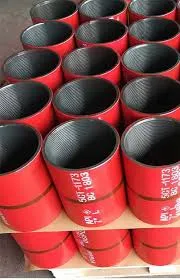- Afrikaans
- Albanian
- Amharic
- Arabic
- Armenian
- Azerbaijani
- Basque
- Belarusian
- Bengali
- Bosnian
- Bulgarian
- Catalan
- Cebuano
- Corsican
- Croatian
- Czech
- Danish
- Dutch
- English
- Esperanto
- Estonian
- Finnish
- French
- Frisian
- Galician
- Georgian
- German
- Greek
- Gujarati
- Haitian Creole
- hausa
- hawaiian
- Hebrew
- Hindi
- Miao
- Hungarian
- Icelandic
- igbo
- Indonesian
- irish
- Italian
- Japanese
- Javanese
- Kannada
- kazakh
- Khmer
- Rwandese
- Korean
- Kurdish
- Kyrgyz
- Lao
- Latin
- Latvian
- Lithuanian
- Luxembourgish
- Macedonian
- Malgashi
- Malay
- Malayalam
- Maltese
- Maori
- Marathi
- Mongolian
- Myanmar
- Nepali
- Norwegian
- Norwegian
- Occitan
- Pashto
- Persian
- Polish
- Portuguese
- Punjabi
- Romanian
- Russian
- Samoan
- Scottish Gaelic
- Serbian
- Sesotho
- Shona
- Sindhi
- Sinhala
- Slovak
- Slovenian
- Somali
- Spanish
- Sundanese
- Swahili
- Swedish
- Tagalog
- Tajik
- Tamil
- Tatar
- Telugu
- Thai
- Turkish
- Turkmen
- Ukrainian
- Urdu
- Uighur
- Uzbek
- Vietnamese
- Welsh
- Bantu
- Yiddish
- Yoruba
- Zulu
Understanding the Role of Tubing Collar in Oil and Gas Operations
The Importance of Tubing Collars in Oil and Gas Drilling
In the oil and gas industry, the extraction of hydrocarbons is a complex process that requires precise engineering and high-quality materials. One of the critical components in this process is the tubing collar, a vital part of the well completion system. Understanding the role and significance of tubing collars can provide insight into their importance in the drilling process.
Tubing collars are specialized fittings that connect sections of tubing together within a wellbore. These collars are designed to provide structural integrity and maintain the required pressure in the well. They serve as connectors for different lengths of tubing, ensuring a seamless and leak-proof operation. The design and material selection for tubing collars are crucial, as they must withstand the harsh conditions found in oil and gas environments, including high pressures, corrosive fluids, and extreme temperatures.
The primary function of a tubing collar is to provide a secure junction between tubing sections, allowing for the safe transportation of oil and gas from the reservoir to the surface. Each collar is engineered to resist torsional and bending stresses that can occur during the drilling and production phases. This ensures that the tubing remains intact and functional throughout the life of the well.
tubing collar

Another critical aspect of tubing collars is their ability to facilitate well control. They are often equipped with various features that support safety measures, such as pressure relief systems and isolation valves. These features are essential for managing the flow of fluids in the well and preventing blowouts, which can be catastrophic events in the drilling process. By enabling precise control over the pressure and flow of hydrocarbons, tubing collars help mitigate risks and enhance operational safety.
The advancement of technology has significantly impacted the design and manufacturing processes of tubing collars. Modern collars are often produced using advanced materials like high-strength steel alloys and corrosion-resistant coatings. These innovations enhance durability and longevity, reducing the need for frequent replacements and repairs. Additionally, computer-aided design (CAD) tools allow for the optimization of collar designs, ensuring they meet the specific requirements of different drilling environments.
Moreover, the installation of tubing collars requires skilled personnel who are trained to handle the complexities of well completion. Proper installation is critical, as any misalignment or improper sealing can lead to leaks or failures. Rigorous testing and quality assurance processes are paramount in ensuring that each collar meets industry standards and performs effectively under challenging conditions.
In conclusion, tubing collars play a vital role in the oil and gas drilling process. They are essential for ensuring the safe and efficient transport of hydrocarbons from the reservoir to the surface. With their ability to provide structural integrity, support well control, and withstand harsh environmental conditions, tubing collars are indispensable components of well completion systems. As technology continues to evolve, the design and performance of tubing collars will undoubtedly advance, further enhancing their importance in the oil and gas industry. Understanding their function and significance can help stakeholders appreciate the complexities of drilling operations and the critical role that high-quality materials and components play in the success of these endeavors.
-
Tubing Pup Joints: Essential Components for Oil and Gas OperationsNewsJul.10,2025
-
Pup Joints: Essential Components for Reliable Drilling OperationsNewsJul.10,2025
-
Pipe Couplings: Connecting Your World EfficientlyNewsJul.10,2025
-
Mastering Oilfield Operations with Quality Tubing and CasingNewsJul.10,2025
-
High-Quality Casing Couplings for Every NeedNewsJul.10,2025
-
Boost Your Drilling Efficiency with Premium Crossover Tools & Seating NipplesNewsJul.10,2025







